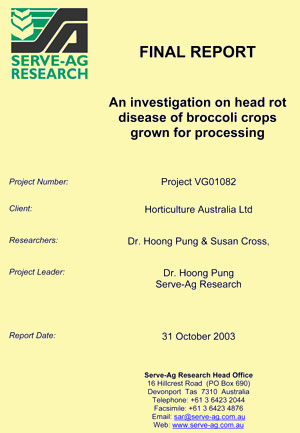|
|
White blister – Albugo candida – is the most important foliar disease of brassica crops in Australia. The disease can affect all stages of plant growth, but its greatest impact is on infected flower heads, resulting in substantial losses to yield and higher costs in sorting. This Horticulture Australia project aimed to evaluate fungicides for white blister control and to expedite the registration of suitable fungicides in Australia for white blister control on brassica and leafy brassica crops. In Tasmania and Victoria, favourable field conditions, consecutive plantings and multiple plantings combine to create a constant disease pressure over a prolonged period of time, as well as prolonged exposure of fungal populations to a fungicide. The systemic fungicides, Amistar, Cabrio, Ridomil Gold MZ and Ridomil Gold Plus have a high risk of resistance development if they are exposed to constant disease pressure. Failure to follow resistance management guidelines carefully will likely result in the loss of these new fungicides as effective control measures. Growers should adopt an integrated disease management strategy that incorporates the use of fungicides, along with other management practices such as resistance cultivars, crop rotations and reducing multiple plantings, for long-term and sustainable disease control.
Conclusions : For long-term and sustainable white blister control growers should adopt an integrated disease management strategy that incorporates the use of fungicides along with other management practices such as using disease tolerant cultivars, crop rotations, management of crop debris, avoid consecutive brassica crops and reducing multiple planting.
Acknowledgments : This project has been facilitated by Horticulture Australia Limited, and has been funded by voluntary contributions from Syngenta Crop Protection Pty Ltd and the Australian Government. Nufarm Australia Limited and Agrichem Industries Pty Ltd also contributed voluntary contributions in the first year for preliminary screening of their fungicides. Key researchers involved in the residue trial studies include : Rodney Burns, Jane Floyed, Kate Williams, Paul Florissen, Elizabeth Fields, Scott Winner. The assistance of broccoli growers who provided the trial sites in Tasmania and Werribee South, Victoria, is gratefully acknowledged. |
||||||
|

